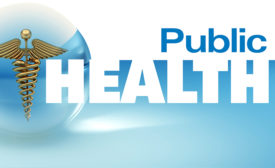News
Employer faces $117K in fines
Read More
CDC Your Health – Your Environment Blog
Community environmental health activism in South Gate, Los Angeles County, CA
March 4, 2016
Public health experts blast Supreme Court’s stay of Clean Power Plan
APHA: Move 'puts public health at risk'
March 3, 2016
ASSE and CPWR release workplace safety resources for at-risk construction workers
More than 50 Safety Tool Boxes now available in Spanish aim to protect vulnerable workforce
March 3, 2016
OSHA cites Sharpe Holdings in death of worker at Missouri dairy farm
Third fatality at company since 2012
March 2, 2016
Georgia worker's severe saw injury uncovers multiple safety violations
OSHA says injury was preventable, proposes nearly $70K in penalties
March 2, 2016
Never miss the latest news and trends driving the safety industry
eNewsletter | Website | eMagazine
JOIN TODAYCopyright ©2024. All Rights Reserved BNP Media.
Design, CMS, Hosting & Web Development :: ePublishing







